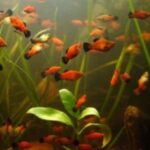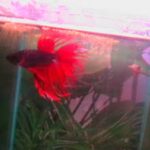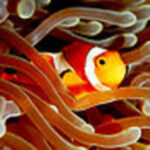The yellow tang has been considered an ideal marine fish since the dawn of time it seems. When you hear of saltwater aquariums and ask a saltwater aquarium enthusiast what type of livestock they have, yellow tang comes up time and time again. Why not? This surgeonfish is easily accessible at various retail venues, they are pretty easy to collect and ship, they acclimate well, add a nice splash of color and uniqueness and the price of these beauties has come down somewhat in the past few years.
Yellow tangs are often collected from the Hawaiian Islands as they are the most prevalent there. The Island of Oahu and Hawaii’s “Big Island” are the best choice for collecting or seeing these tangs in numbers from shallow regions to a depth of 120 feet or so. To be able to see a school of yellow tangs foraging in the wild, or any other tang for that matter, is truly a wondrous and beautiful spectacle to be observed.
Zebrasomas require a varied diet, with the bulk of their food being vegetable fare. They are grazers as are all surgeonfish, tangs and doctorfish so the feeding of small amounts of algae and proteinaceous foods 3-4 times a day is ideal for them. Zebrasomas will also pick at morsels on liverock and feed on algae growing in a tank which affords them as being a pretty good cleanup artist in a tank. Vegetable matter has to be the main staple for these fish to ensure that they receive the proper vitamins and minerals afforded them by this vegetable matter. Without a constant supply of vegetable matter in their diet, tangs will develop loss of color and lateral line erosion. This can ultimately lead to the demise of your prized tang. The feeding of lettuce, okra, kale or spinach or similar items should be refrained from as the nutrient values are not going to be as beneficial as by using nori, kombu and the various algae sheets and vegetable flakes commonly available. These insufficient vegetable choices contain too much oxalic acid and their nutrient values are sub par at best, so why would you take a chance with your fishes life by offering it inadequate means of feeding? The protein foodstuff is essential for proper growth, size and development and can be satisfied with consistent small feeding over the course of the day of brine and mysis shrimp as well as clam, squid, krill, flake and formula foods.
When selecting a Yellow Tang for your tank, it is best to find one with no blemishes, scars or red areas especially in the gill, spine and fin regions. A vibrant, deep, golden yellow color should be displayed by the tang. Behavior is also a big determining factor in choosing a healthy tang. They should be curious in nature and as curious about you as you are of them. They should be constantly swimming and grazing, not hanging around in a corner, top of the tank or on the substrate with a subdued coloration. Yes, their bright yellow coloration can be muttled periodically especially at nighttime or when scarred. Their are also various morphs of yellow tangs, however the yellow color is the dominant one.
Ich and marine velvet are two of the most commonly observed diseases associated with tangs, along with the lateral line disease mentioned above. Stress is the major determining factor in whether or not a tang will develop these deadly diseases/parasites. Temperature variations can also present major implications if the changes are not done over an extended period of time.
One word of caution regarding the yellow tang! They have a white barb or spine near their tail, that they can use to ward off other fish or display aggression to. To the unwary or careless aquarist that sticks their hand in the tank care must be taken to avoid the likelihood of being jabbed by their spine either out of aggressive tendencies, spite, being scarred or accidental contact. Either way they will do damage with their sharp spine with the pain being excruciating and infection could be the end result.
This spine acts as a weapon for the tangs and surgeonfish. To reduce the chances of infliction to other fish, it is best to keep one yellow tang per tank, unless you have a very large tank or you purchase the yellow tangs as juveniles and together. The addition of another zebrasoma tang will ultimately lead to boisterous behavior being displayed by one or more of the zebrasoma species of tang resulting in injury or even death of one or more of the tangs. Housing tangs from different genus’ can be done however! Acanthurus, Ctenochaetus, Naso or Paracanthurus species can be added with a yellow tang with little chance of aggression being displayed. Of course their are exceptions to the rule and also you may encounter mild aggression during the first couple days after adding another tang.





